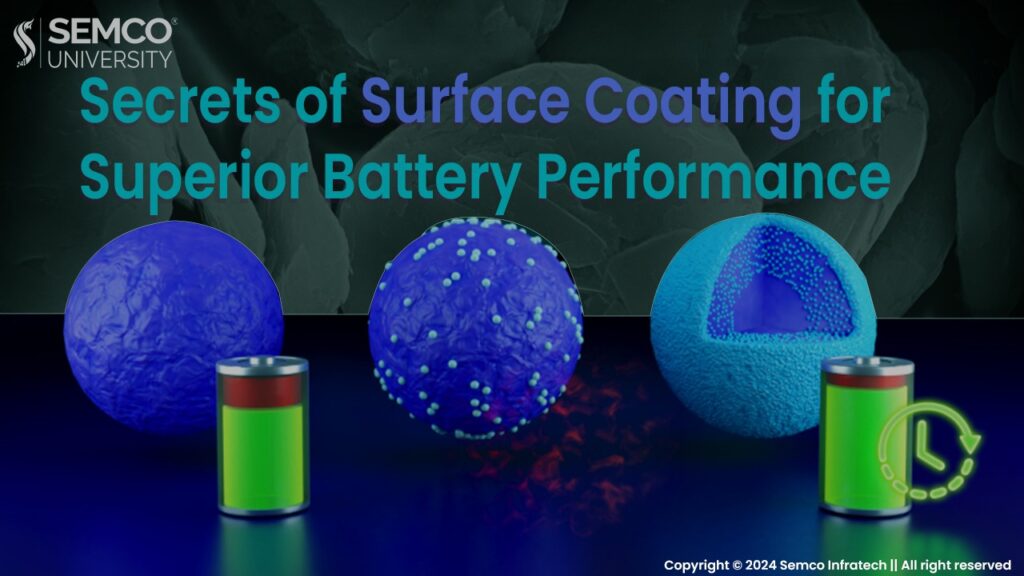The quest for high-performance lithium-ion batteries has led scientists to explore the fascinating world of surface coating for cathode materials. This article delves into the different types of coatings and their impact on battery function.
Coating Requirements:
- Thin and Uniform: A thin, even coating ensures complete protection while minimizing hindrance to lithium-ion movement within the cathode.
- Conductive: The coating should allow for the efficient flow of electrons and ions, crucial for optimal battery operation.
- Durable: The coating needs to withstand the stresses of charging and discharging cycles without degrading.
- Scalable Coating Processes: Techniques suitable for large-scale battery production are preferred.
Coating Functions:
- Physical Barrier: The coating acts as a shield, preventing undesirable reactions between the cathode and electrolyte.
- HF Scavenger: Certain coatings remove harmful hydrofluoric acid (HF) from the electrolyte, protecting the cathode from chemical corrosion.
- Conductivity Booster: Some coatings enhance the flow of electrons and ions within the cathode, improving battery performance.
- Surface Modification: Coatings can chemically modify the cathode surface, promoting better charge transfer at the interface.
- Structural Stabilizer: Coatings can help maintain the cathode’s structure, reducing stress and improving its lifespan.
Types of Coating Materials:
- Metal Oxides: These offer physical protection but may hinder lithium-ion movement.
- Phosphates: They improve ion transport within the cathode, particularly beneficial for nickel-rich cathodes.
- Electrode Materials: Using a more stable material as a coating can enhance the overall stability and performance of the cathode.
- Solid Electrolytes: These offer both a physical barrier and improved ionic conductivity, but their low electronic conductivity requires further research.
- Conductive Polymers: These coatings provide a uniform film with high electronic conductivity, enhancing charge transfer and reducing side reactions.
- Surface Doping: This approach modifies the cathode’s surface composition to improve stability without hindering ion diffusion.
Optimizing Coating Thickness:
Finding the right balance between coating thickness and lithium-ion diffusion is critical. Thicker coatings offer better protection but can impede ion movement. Research suggests keeping the coating below 10nm for optimal performance.
Surface Coating for All-Solid-State Batteries:
This next-generation battery technology requires cathode surface coating to address compatibility issues between the cathode and solid electrolytes. The ideal coating should be ion-conductive, electrically insulating, and mechanically robust.
In conclusion, surface coating presents a revolutionary approach to enhancing the performance and lifespan of lithium-ion batteries. By understanding the different types of coatings and their functionalities, researchers can unlock the full potential of this technology and pave the way for a future powered by cleaner, more efficient energy storage solutions.
_________________________________________________________________________________________________
About Semco – Semco University is an educational website that caters to the needs of students and researchers. Offering information on Lithium-ion batteries. The resources and content are compiled from various sources including manufacturers, test labs, crowdsourcing, etc. Our motto is to provide a viable resource for companies, students, and enthusiasts interested in participating in the Li-ion Battery industry. Our initiative is to make people aware of the benefits, and opportunities of the revolutionary Lithium Batteries for multiple applications.

